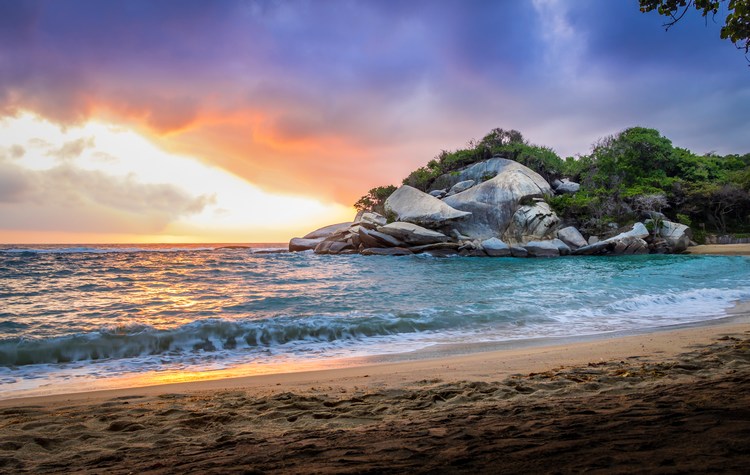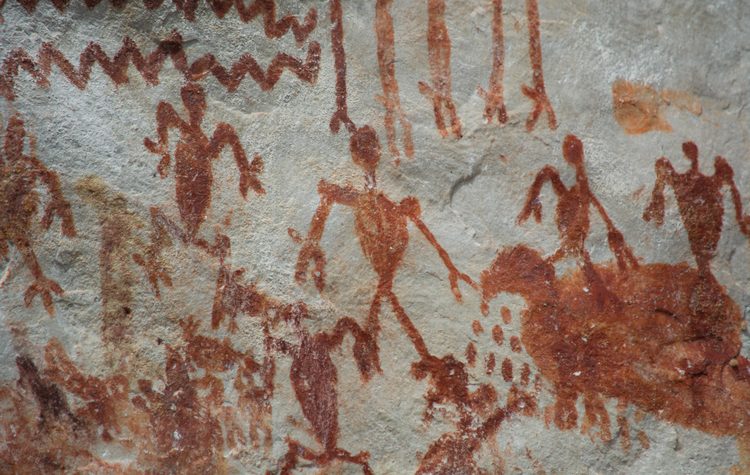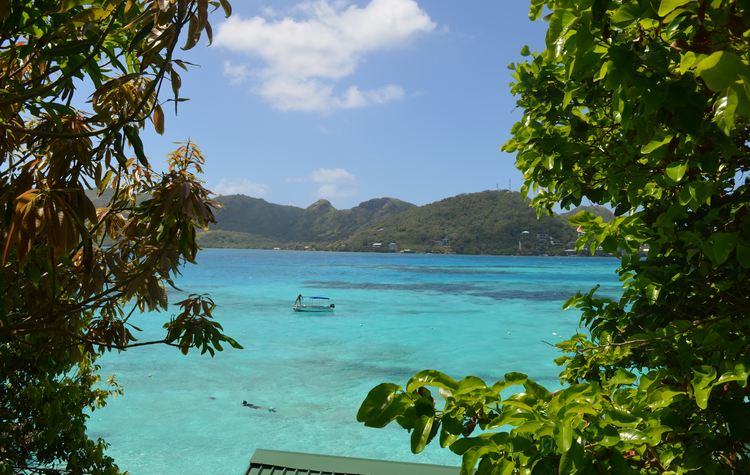
Cradled by the Amazon jungle, Andes mountains, and the Pacific as well as Caribbean coasts, Colombia is marked by a diverse array of ecosystems and geographical terrains. From lush cloud forests to coral reefs, the South American destination is considered to have the second-greatest biodiversity in the world—in fact, there are nearly 60 national parks in Colombia.
Join us at Kuoda for an immersive and sustainable experience when you opt for a custom-designed adventure to any of the following top ten national parks in Colombia.
National Parks in Colombia You Have to Know
1. Tayrona

Located in Colombia’s northern Caribbean region, Tayrona National Park is renowned for its white-sand beaches facing an intensely blue sea and superb snorkeling opportunities. Kuoda travel designers can plan a custom journey to this Colombia national park that includes spotting as many as possible of the 300 species of birds living in the area upon a jungle hike, horseback riding down the powdery beach or taking a dip in the pleasant Caribbean water for an up-close look at the area’s 110 species of coral and 401 species of colorful fish.
Tayrona has an extremely diverse climate as its proximity to the Sierra Nevada de Santa María brings chilly mountain breezes to cool visitors off from the otherwise tropical weather.
Before you go: The park opens at 8am and closes at 5pm (last entry admitted is at 4pm) so plan accordingly.
2. Los Nevados

Spread across some 225 square miles in the heart of Colombia’s coffee region, Los Nevados national park is dominated by the active Volcano Ruiz. Rising 17,400 feet above sea level, this is the tallest of several other snow-capped volcanoes that tower over the park. Glaciers and high-altitude lakes are also found in the pristine area, making it ideal for hiking and disconnecting from the daily hustle and bustle.
Countless sources of water originate in this Andean park, feeding into nearby communities as well as contributing to the Otún wetlands. With the help of a guide, handpicked by Kuoda, you and your travel group can witness exotic wildlife, such as the Andean condor, hummingbirds, tapirs, bears and cougars.
Before you go: This high-altitude park is for tourists in top physical shape with experience in adventure tourism.
3. Corales del Rosario y San Bernardo

A short boat ride away from Cartagena, the Rosario Islands are home to Colombia’s sole underwater national park, Rosario and San Bernardo Corals National Park. An impressive coral reef as well as mangroves and seagrass beds surround the islets creating a colorful water experience for scuba diving enthusiasts. Any of the 200 species of fish, multicolored crustaceans and starfish that thrive in the translucent waters are sure to accompany your underwater journey.
Kuoda travel designers can create a personalized day or overnight trip to secluded beaches like Playa Libre or Playa Bonita (both located on Isla Grande). After a day of snorkeling or swimming in warm Caribbean waters, recount your adventures over a cozy bonfire and a cheeky tropics-inspired cocktail.
Before you go: The best way to explore the Rosario Islands is by private boat. Contact us for more information.
4. Sierra Nevada del Cocuy

A succession of 25 snow and ice peaks dot the Sierra Nevada del Cocuy National Park, raining in elevations of 4800-5330 masl. Thanks to the majestic army of mountains, the protected area has 150 lagoons, among which include La Plaza lagoon (that drains into a waterfall) and Grande lagoon (a vibrant area that extends 35 hectares).
Authorized trails and camping sites have been created in service to intrepid travelers in top physical condition who seek thrilling experiences in addition to luxurious ones. Hikers and rock climbers can satiate their hunger for adrenaline in the peaks and valleys of the Andes mountains.
Before you go: Kuoda would like to remind travelers that this national park is sacred to the Uwa indigenous community. The eastern side of the park includes an indigenous reserve and is thus closed to tourism.
5. Serranía de la Macarena

Liquid rainbow. These two words are often enough to entice travelers to visit this extraordinary national park, and they refer to the English translation of Caño Cristales, undoubtedly the most well-known feature of the Serrania de la Macarena National Park. And while this 62-mile river of greens, yellows, reds, blues and even black is a jaw-dropping vision, the park has so much more to offer.
Home to thousands of endangered and unique species of flora and fauna, visitors will relish the biodiversity conserved in this 2,400-square-mile park. Located on the border of three large ecosystems—jungle, dry forest and shrubland savannahs—Serrania de la Macarena offers ecotourism by way of ancient petroglyphs, fishing, and hikes.
Before you go: Aim to visit at the end of July-November, when Caño Cristales is at its most colorful!
6. Chingaza

For travelers staying in Bogota, the Chingaza National Park is definitely worth carving time out for. Located less than 40 miles northeast of the capital, this park covers 76,600 hectares and includes a paramo ecosystem (high-altitude wetlands unique to the Andes) that provides the majority of the city’s drinking water.
Surrounding the 60+ glacial lakes and streams are 2,000 species of endangered and endemic species of Andean flora and fauna. Each of the six ecotourism trails take visitors on self-guided tours of this haven for wildlife, ideal for birdwatching (nearly 400 winged species have been recorded in the area) and simply enjoying the fresh air.
Before you go: Consider sleeping under the stars at the park’s campsite, located in the Monterredondo sector.
7. Tuparro

One of the largest national parks in Colombia, Tuparro National Park is situated on the country’s shared border with Venezuela. Due to its isolated location, Tuparro is rarely swarmed with tourists; consequently, the park is a sanctuary for birds, monkeys, giant armadillo, pink dolphins and rare orchids.
Lined by golden beaches and green savannah, Tuparro is also home to what the great 19th-century explorer Alexander von Humnboldt referred to as the “eighth wonder of the world,” Maipures (also spelled Maypures). The torrent runs between Colombia and Venezuela and is full of smooth boulders.
Before you go: Plan on visiting during Colombia’s summer season (December-March), when there is less rainfall.
8. Chiribiquete

It’s impossible to overlook Chiribiquete when considering the best national parks in Colombia—afterall, it is the largest national park in the nation. Tucked in the Amazon Rainforest, in southcentral Colombia, this protected area spans 2,782,354 hectares and is brimming with diverse wildlife. The park also contains ancient indigenous art (mainly in the form of rock pictographs), some of which dates back to 20,000 BC.
Due to its environmental significance and the presence of uncontacted indigenous tribes, this park is mainly off-limits to the general public. But you can get an incredible view of Chiribiquete and its tepuis—table-top mountains unique to the Guiana Shield—by way of a private fly-over journey.
Before you go: Not sure that a flight above this vast piece of protected wilderness is worth it? Consider the fact that Chiribiquete is one of the last truly pristine places on our planet.
9. Old Providence McBean Lagoon

Protecting part of the second largest coral reef in the Caribbean, Old Providence McBean Lagoon National Park is surrounded by water that is so colorful it is often referred to as “the sea of seven colors.” The park pertains to the Seaflower Biosphere Reserve (as declared by UNESCO) as the 32-kilometer long reef includes two different types of coral formations. Kuoda travel designers can match you with licensed boat drivers in order that you can explore the protected area without running the risk of damaging the area.
Located on Providencia Island in the San Andres archipelago, the park includes ample dry forest and mangrove swamps for hiking and birdwatching.
Before you go: The Old Providence park can be reached in less than two hours from Cartagena. Travelers can go by private boat or by a combination of road and ferry.
10. Amacayacu

The first protected area created in the Colombian Amazon, the Amacayacu National Park is accessed by boat from the city of Leticia. Rich with abundant and diverse flora, visitors to Amacayacu can also witness a third of the bird species and just under half of mammal species found in all of Colombia.
As you take a canoe ride down the Amazon River, passing indigenous communities that preserve ancestral traditions, keep your eyes peeled for the Victoria Regia—the world’s largest lotus—, tapirs and jaguars along the shore, as well as the Amazonian manatee and river dolphin.
Before you go: Since this park is located in the Amazon, rain levels vary drastically throughout the year. September is one of the driest months while the month of May sees heavy rainfall and flooded areas.
Travel Carbon Neutral With Kuoda
The best way to be a more sustainable traveler is to visit natural protected areas with a Tour Operator that also offers carbon neutrality.
Kuoda is a carbon neutral company that ensures that every detail of your travel promotes the best for the environments you’re traveling in.
If you’ve been thinking of planning a trip to national parks in Colombia, there’s no better time than now.
Contact Us to start customizing your sustainable journey to Colombia.
Peru’s Northern Beaches Travel Guide: Your Adventure-Filled Getaway
Bask in the northern BEACHERGOER’S PARADISE, With its dependable year-round sunshine, pristine coastline, s...
Read PostThe Most Eco-Friendly Hotels in South America For The Responsible Traveler
For the eco friendly hotels in South America, responsible travel in hospitality is not just a trend but a nece...
Read PostExplore Peru’s Sacred Valley: A Journey Through Incan Wonders
Experience a land BLESSED BY INCAS, Tucked away in the Andean foothills of Peru lies the historic Sacred Vall...
Read Post

 Call
Call 























